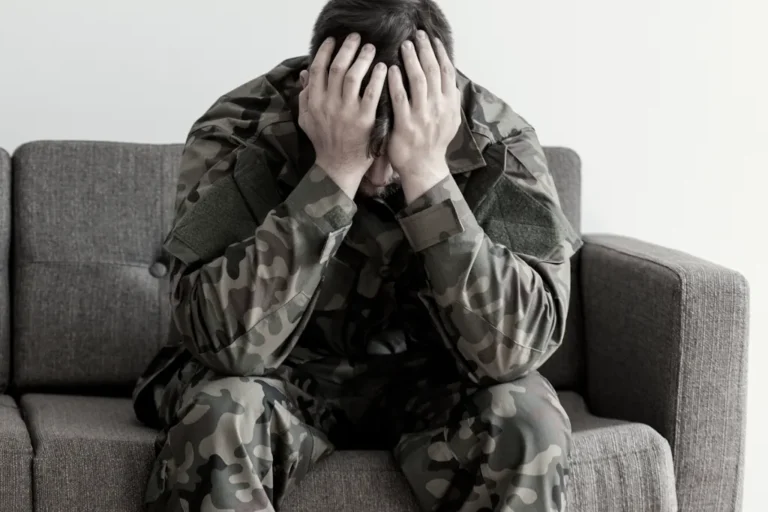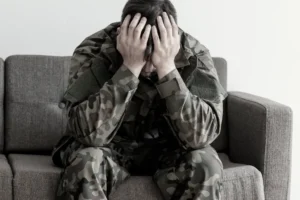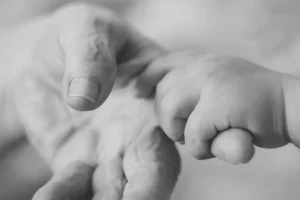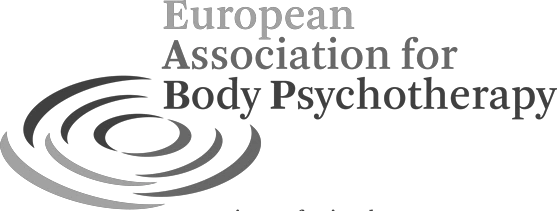Resolving Post Traumatic Stress (PTSD) through Body Psychotherapy

Post-Traumatic Stress Disorder (PTSD) is a mental condition that can develop after experiencing or witnessing a traumatic event. Not every traumatic event causes PTSD. What is important is how the person is supported after the traumatic event (shock).
This article examines how traumatic experiences lead to the development of PTSD and how body psychotherapy can help overcome PTSD symptoms.
Traumatic Events and PTSD
Shock Events
Post-traumatic stress disorder stems from shock events. These are experiences that are actually or subjectively perceived to be about survival. That is, stressful events “of exceptional threat or catastrophic magnitude” (ICD-10). These psychological shocks are experiences that come “too much, too quickly, too suddenly” and therefore cannot be consciously processed easily.
Activation of survival instincts
Since such a dramatic situation is about (perceived) survival, a high level of activation of the whole body is required. Our survival mechanisms take over, meaning our instincts and automatic abilities come into play. The body prepares to react quickly and enable either fight or flight.
“Trauma is in the nervous system and body, and not in the event”
“Trauma is a highly activated incomplete biological response to threat, frozen in time.“
Dr. Peter Levine Trauma Forscher & Entwickler von Somatic Experiencing in Somatic experiencing: using interoception and proprioception as core elements of trauma therapyPhysical Activation in Response to an Event
Biologically, the goal of high activation is to mobilize a lot of energy to ensure survival. The physical response consists of high levels of autonomic nervous system arousal for fight or flight and then return to a safe environment. Safety consists above all in physical survival and good social contact with safe people.
- Escape – The person would flee to safety and in the process of fleeing (running away) would use up the energy.
- Combat – Alternatively, the energy could be expended in combat, even after which the person could return to safety.
How Trauma Manifests itself Physically
“Trauma is not what happens to us, but what we hold inside in the absence of an empathic witness.“
Dr. Peter Levine Trauma Forscher & Entwickler von Somatic Experiencing“Traumatisation” or the symptoms of post-traumatic stress disorder (PTSD) occur when the high level of activation is not metabolized sufficiently (the energy is not used) and/or it is not possible to return to safe social contact promptly after fleeing/fighting.
In this case, the high energy remains bound in the body and nervous system and the high level of stress continues to have an effect. This can have long-term effects on the body and soul.
When the shock energy remains bound in the body, the body stores the memory of its reaction to the traumatic event. The danger to the body thus continues and the nervous system remains on constant alert, muscles may stay stuck in a state of tension of flaccidity. The reaction to this is symptoms of post-traumatic stress disorder (trauma symptoms).
This is often the case for people in the modern world. If flight or fight is not possible, the survival energies are not used. At the same time, there is often a lack of a broader social network to absorb the shock, since close relatives are often affected themselves.
Animals living in nature are less likely to be traumatised. On the one hand, they live (without culture and technology) closer to the typical dangers to which their body was exposed in the history of evolution, which means that prey animals often fall victim to predators (and are not saved). If the animal can free itself from the situation, the high traumatic energy will actually be discharged in flight or fight, or physically tremble after waking up from immobility. The animal then returns to the safe pack (and not to the apartment / nuclear family).
If the high activation in the shock event cannot be used up or dissipated in a safe environment, the stress gets stuck in the body.
Example: Car accident
First of all, there is a physical trauma that leads to physical injuries. Modern medicine works wonders in saving lives and treating the body, but psychological traumatization can still occur:
- It is not possible to run away or fight with the car, the accident is completely unexpected.
- The defensive movements (e.g. protection from the impact) are often not yet complete.
- During patient transport, the body is immobilized, the high physiological energy cannot be discharged through movement.
- During treatment in the hospital, there is often no loving, safe person present and a timely feeling of safe contact is not possible.
Therefore, sometimes the traumatic energy remains stored in the body. This can then manifest itself in symptoms of post-traumatic stress disorder (e.g. high arousal, sleep disturbances, recurring memories and avoidance of the situation).
Example: Hospitalization in Childhood
When children are hospitalized, the real problem is often the lack of a loving parent or other caregiver. The child remains alone in the hospital, possibly with a serious illness or after an accident.
- In this situation, the child could develop a strong fear of being abandoned.
- Acting out the high activation state of fear of abandonment is not possible for the child because a tantrum would lead to further rejection by the hospital staff.
- This leaves the child alone in its traumatization and it is not possible to return to the secure attachment in the near future.
As a result, trust maybe lost to the parents who supposedly left the child alone. Such early traumas can affect relationships with people at large and overshadow beliefs about themselves (“I’m not worth it”) or the world (“the world is cruel”) decades later. On the physical level, symptoms of an overactive nervous system often manifest themselves (e.g. high blood pressure, heart problems, etc.)
Symptoms of post-traumatic stress disorder (PTSD) are the after-effects of unresolved shock in the body and nervous system.
How Body Psychotherapy Can Help Overcome Trauma
Body Psychotherapy can help overcome PTSD without having to endlessly talk about the experience and without reliving the pain of the trauma. Body psychotherapeutic methods such as Bodynamic® and Somatic Experiencing® are particularly suitable for releasing trauma stored in the body. You can process traumatic events and thereby reduce symptoms such as flashbacks, nightmares and anxiety. This makes it possible to resolve PTSD symptoms, move forward after trauma, and improve overall well-being.
Overview
Body Psychotherapy techniques work with the following steps to release trauma from the body:
Step 1
Energy Management
Bewältigung der PTBS-Symptome und Beruhigung des Nervensystems
Step 2
Strengthen Body Ego
Eigene Grenzen aufbauen, erden und zentrieren
Step 3
Wake-up the Body
Nervensystems und schlaffe Muskeln aufwecken – gesunde Spannung und Energie schaffen
Step 4
Biologic Completion
Vervollständigung von Trauma-Reaktionen und -Bewegungen
Step 5
New Positioning for Growth
Neupositionierung in Richtung Leben und posttraumatisches Wachstum
Energy Management – Managing PTSD symptoms and calming the nervous system
- The stress of shock has exceeded the normal window of tolerance in which we can handle stress without discomfort. The fear of reliving keeps us in a state of over-vigilance (hypervigilance). We are overly jumpy even with normal stimuli.
- Body-oriented trauma psychotherapy is often initially about calming the nervous system and finding new safety within us. This also includes building coping strategies, i.e. techniques for managing PTSD symptoms such as flashbacks.
- Additionally, it’s important to create safety in day-to-day life – finding real safe places and connecting with safer people.
Strengthening the Body Ego – Establishing boundaries, grounding and centering
- As a result of the trauma, we have lost vital functions of our body-ego and body-consciousness:
- Often the body is no longer experienced as safe (e.g. it was unable to protect us during shock, it can be full of pain due to physical injuries)
- Our boundaries have been violated (e.g. our body has been violated)
- Our sense of reality is shattered (e.g. how is it possible for this to happen to us) – we have lost our grounding and our old reality.
- We have lost our center – it feels like we can no longer trust our inner impulses
- Body psychotherapy aims at gently developing more body awareness.
Awakening the Body – Get healthy energy and tension in the body
- As part of the trauma, our nervous system or part of our body may have given up. The result are individual flaccid muscles or overall lack of energy. This is a protective response to impending unavoidable danger when fighting, fleeing, or negotiating is no longer possible.
- During body psychotherapy, the nervous system can be awakened to bring it back into balance. Collapsed muscles are gently encouraged to become active again.
- If successful, this often leads to the next step, the biological completion of movements or states of activation.
Biological Completion – Body movements and nervous system response
- The physiological response to the shock (muscle tension, high nervous system activation) follows a specific pattern that is sometimes disrupted. – In this case, the trauma gets stuck in the body.
- These sequences can be supplemented in body psychotherapy. – Be it by releasing the activation of the nervous system (slowly bit by bit or by fast movements like running away from fear) or by completing the protective movements.
Repositioning toward life and post-traumatic growth
- Focusing on trauma symptoms and the past event often distracts us from the challenges and opportunities of our lives today.
- Body Psychotherapy can help reposition yourself towards growth and opportunity. You can learn to trust your impulses again and make decisions about what you want in life and then position yourself accordingly.









